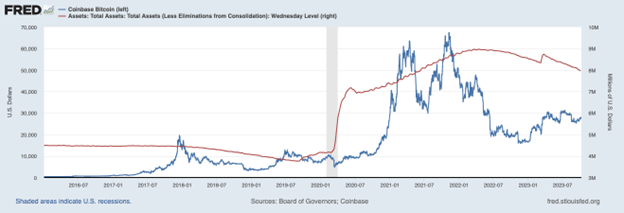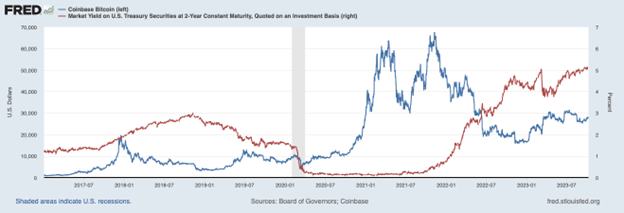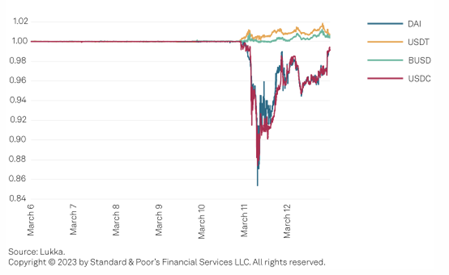Cryptocurrency is failing. Or so it seems.
Last week, the arrest of Su Zhu, cofounder of failed crypto hedge fund Three Arrows Capital, brought to light the integrity issues which have plagued the crypto landscape. Along with cofounder Kyle Davies, the fund faced $3.5 billion of creditor’s claim, making its collapse one of the largest hedge-fund collapses of all time.
Zhu’s arrest came from a long line of incidents. The JPEX scandal, the 2022 crypto crisis, and perhaps most infamously FTX’s downfall have elicited criticisms from prominent financial experts and created a sense of apprehension in the general public. A recent poll found that 75 percent of Americans who have heard of crypto are not confident in its safety and reliability.
To combat deteriorating trends, policymakers around the world have zeroed in on the industry. In July 2023, twin actions filed by the Securities and Exchange Commission against Binance and Coinbase made it clear that regulators believe crypto should not exist in the United States. Across the street, bipartisan efforts were made on a bill to institute crypto market structure rules. As oppositions against crypto are mounting and the battle over the Fed’s controversial central bank digital currency is intensifying, it suddenly becomes vital to put these occurrences in context.
Sure, Integrity Issues. What about Macroeconomics?
As easy as it is to magnify the bewilderingly irresponsible actions of individuals such as Zhu and Sam Bankman-Fried, crypto assets are not exempt from macroeconomic issues. In fact, the past decade has shown that bull and bear runs in the crypto market have coincided with periods of loose monetary policies and of significant tightening.
Figure 1: Fed Assets and Bitcoin Prices Since 2016
Source: FRED.
- Quantitative easing/quantitative tightening: The chart above shows the total assets on the Fed’s balance sheet and the price of bitcoin since 2016. After a bitcoin rally in 2017, a sharp drop in 2018 coincided with a Fed balance sheet reduction program. Another rally in 2020 coincided with the quantitative easing that started during the pandemic and increased institutional interest in the cryptocurrency market. Bitcoin’s price ultimately reached its peak around November 2021 before steadily declining as the stark possibility of inflation dawned, leading to the quantitative tightening starting June 2022. The downturn was coupled with crypto-specific collapses such as stablecoin TerraUSD in May, crypto lending company Celsius in July, and crypto exchange FTX in November.
Figure 2: Interest Rates for Risky Assets and Bitcoin Prices Since 2017
Source: FRED.
- Interest rate: Low interest rate increases demand for higher-risk assets and returns, which can be extended to crypto assets. Conversely, a high interest rate implies tighter monetary conditions and decreases the appetite for risky assets. In the chart above, we use the risk-neutral yield on the two-year Treasury bond which gauges short-term market expectations on US interest rates. Starting from 2018, interest rates and bitcoin price have exhibited an inverse relationship, exhibiting even more so from the end of the Fed covid quantitative easing program. This inverse relationship aligns with the typical behavior we would anticipate from traditional assets.
Figure 3: The impact of Silicon Valley Bank’s failure on stablecoins depended on their risk exposure
Source: S&P Financial Services.
- Traditional finance: Finally, the temporary depegging of stablecoins following the failure of Silicon Valley Bank highlights the contagion risks between cryptocurrency and traditional finance. Stablecoins are crypto assets that are intended to maintain their value relative to a fiat currency. When Silicon Valley Bank collapsed, USD coin—the digital stablecoin which is redeemable one to one for US dollars—had $3.3 billion of its $40 billion reserves locked in it. This caused the coin to depeg to as low as $0.87, which further led to the depegging of other stablecoins and the crypto market going haywire. The well-being of the crypto market is more closely related to that of traditional financial markets than we imagine.
So, What Is Causing the Problems?
In light of the collapses of numerous crypto powerhouses, personal integrity issues have become the mainstream critique against the crypto community. Popular sentiments are fueling draconian regulations on crypto in fear of frauds by alleged crooks such as Zhu and Bankman-Fried.
Macroeconomic analysis offers entirely different perspectives. The 2020 quantitative easing not only created a bullish market for traditional finance but also spurred unrealistic expectations in the crypto market. Ambitious initiatives were made which led to over investments, all of which were destroyed by the 2022 quantitative tightening and the ongoing recession.
What does this mean in a larger context? Under the pretense of peace and prosperity, the Fed artificially propped up the economy through expansionary monetary policies, doubling the money supply of 1983 within fifteen years and tripling it within twenty years. Combined with the pandemic-induced surge in price and aggressive fiscal stimulus, inflation spiraled out of control as the Fed scrambled to increase interest rates. Since March 2022, eleven consecutive rate hikes have pushed the federal fund rate to a twenty-two-year high of 5.25 to 5.50 percent, generating a huge recession which spreads uncertainty in all industries.
It goes without saying that the crypto market suffered under such circumstances. As a relatively nascent industry, crypto is extremely susceptible to the boom-and-bust cycles which had characterized the US economy since time immemorial. Speculations and bubbles are inevitable, and the larger they get, the more disastrous their crash will be. The problems we see in crypto thus, in fact, have to do with something much larger than the Zhus and Bankman-Frieds we see on mainstream media.
Cryptocurrency as Scapegoat
In The Denationalization of Money, Friedrich Hayek noted, “The past instability of the market economy is the consequence of the exclusion of the most important regulator of the market mechanism, money, from itself being regulated by the market process.”
Decentralized crypto at its core aims to restore stability by putting money back into the free market. Purchasing power is ensured as private entities handle these currencies at the risk of going bust while competing against other private currencies.
Under the Fed’s wanton expansion, however, monetary stability has been replaced by monetary laziness, boom-bust cycles, and an overall sense of pessimism. Yes, crypto has numerous developmental risks, and yes, some of its key players are fraudulent. But blaming its (temporary) downfall on mere integrity issues only shifts responsibility away from the Fed.
At the end of the day, innovations are made, policies are passed, and crooks still run abound in our world. While blaming the crooks for the failures of the policies is never a sustainable approach, this is exactly what we are witnessing right now. Although its future remains unknown, cryptocurrency has become the scapegoat which policymakers are ever so eager to pile on.
Full story here Are you the author? Previous post See more for Next postTags: Featured,newsletter





























